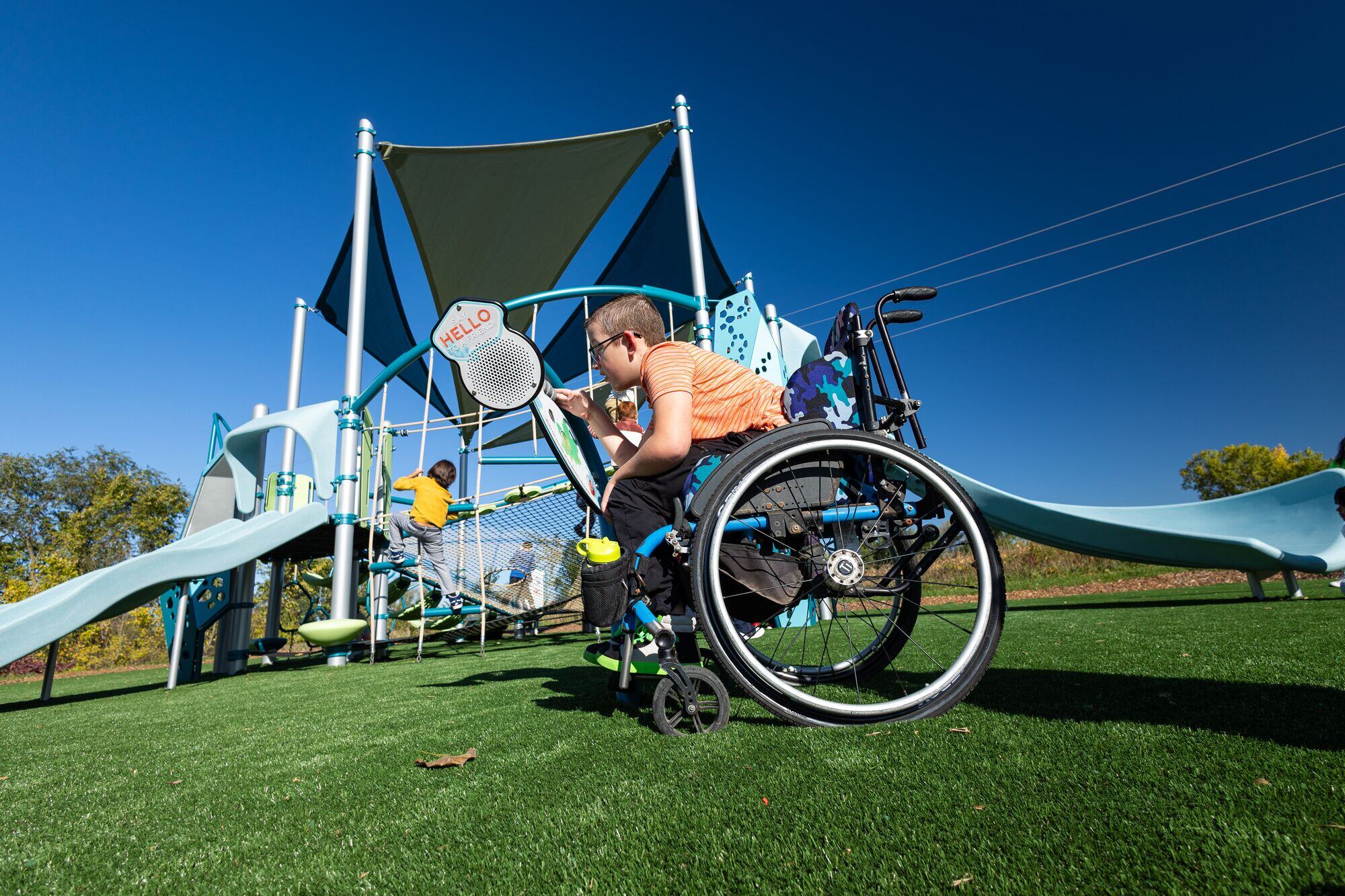HOW THE AMERICANS WITH DISABILITIES ACT PAVED THE WAY FOR ALL ACCESS PLAYGROUNDS
Introduction
Approximately 1 in 4 adults (27% of the population) in the United States have a disability of some kind. People with disabilities represent the nation’s largest minority group, and anyone could join this group at any time. Before the Americans with Disabilities Act (ADA) was passed in 1990, individuals with disabilities faced significant challenges and widespread discrimination. Public spaces, schools, workplaces, healthcare facilities, and transportation systems were largely inaccessible, leading to social isolation and limited opportunities. Employment and educational discrimination were common, with few legal protections against unfair treatment. Negative social attitudes and a lack of awareness further compounded these difficulties. Despite some progress through earlier legislation like the Rehabilitation Act of 1973 and the Education for All Handicapped Children Act of 1975, the ADA's passage marked a crucial turning point, establishing comprehensive legal protections and promoting greater inclusion and accessibility for individuals with disabilities in American society.
The Americans with Disabilities Act (ADA), signed into law on July 26, 1990, granted equal opportunities to individuals with physical disabilities by prohibiting discrimination across all public domains. This landmark legislation significantly enhanced the lives of people with disabilities by mandating accessibility in public spaces.
Following the enactment of ADA, public spaces underwent significant transformation to ensure accessibility. Mandated curb cuts, wheelchair ramps, and audible pedestrian signals were introduced, facilitating easier navigation for individuals with disabilities. Additionally, requirements for handicapped parking spaces near accessible ramps in parking lots and the implementation of Braille signage in restrooms, classrooms, and other communal areas further shaped the landscape.
Post-1990, the mandate extended to include playgrounds among newly constructed public spaces that must adhere to accessibility standards. However, devising solutions to meet these standards posed considerable challenges.
Crafting All Access Playgrounds
Landscape Structures founder, Steve King, played a pivotal role in developing innovative accessibility solutions for playgrounds. In 1993, he joined the Federal Access Board’s Recreation Access Committee as the sole representative from a playground equipment manufacturer. While the board lacked insights into making playgrounds accessible, Steve King was resolute in his mission to pioneer all access playgrounds.
To better grasp his commitment to enhancing playground spaces, King took an unconventional approach by incorporating valuable user feedback into future product development. During a hearing, he engaged with a wheelchair user, exploring daily activities like transitioning from bed to bathroom. This dialogue sparked breakthroughs in playground accessibility, leading to the eventual development of the all access playground.
Through these conversations, Landscape Structures swiftly integrated observations into their research and development. They became the first to introduce transfer modules in play structures, allowing wheelchair users to seamlessly transfer onto playgrounds. Though seemingly subtle to those without disabilities, these modules marked a significant leap towards inclusive all access playgrounds.
Steve King’s dedication didn’t end there.

Genesis of Playground Compliancy Standards
For 20 years, Steve served as chairman of a task group for the American Society for Testing and Materials (ASTM). His group collaborated closely with the U.S. Consumer Products Safety Commission (CPSC) to revise the ASTM F1487 Specification—a safety and accessibility standard for public playground equipment aimed at children aged 2-12. Their objective was to develop playground standards aligning with the Americans with Disabilities Act. By 2000, the U.S. Access Board had published comprehensive guidelines focusing on accessibility in play areas, mandating:
- Providing access to at least one of each type of ground-level equipment in play areas.
- Ensuring access via ramp or transfer system to at least half of the elevated structures.
- Surfacing must accommodate people using wheelchairs.
Due to Steve King’s role in formulating ADA-compliant guidelines for playgrounds, Landscape Structures became the pioneering manufacturer to innovate components specifically tailored to meet these requirements, facilitating the proliferation of all access playgrounds.
Even after his relentless efforts, Steve King was not content with merely accommodating accessibility needs. His vision extended towards creating playground designs that foster inclusivity for individuals of all abilities.

Turning Accessibility into Inclusion
ADA requirements provide vital standards for ensuring accessible play areas for children with physical disabilities. However, not all disabilities are physical. Playground standards set by the ADA unintentionally do not provide solutions for non-physical disabilities. Therefore, while ADA-compliant playgrounds accommodate children with physical disabilities, those with non-physical disabilities are often excluded. Inclusive playground design changes this dynamic, resulting in all access playgrounds.
Landscape Structures acknowledges and emphasizes that individuals do not require "fixing." Instead, the built environment needs to be adapted and changed. With inclusive playground design, the playground environment supports people of all ability levels. This approach allows every child to find the perfect activity to fit their needs. Inclusive design goes beyond providing a ramped structure by integrating diverse sensory experiences for children. The inclusive features are seamlessly integrated into the rest of the equipment. This ensures that children don’t have to leave the fun to interact with the features they need. This integration is the essence of all access playgrounds, fostering true inclusion and enjoyment for every child.
Conclusion
The Americans with Disabilities Act (ADA) profoundly transformed the landscape for individuals with disabilities by mandating accessibility across public domains, including playgrounds. The journey from inaccessible and discriminatory environments to inclusive and accommodating spaces has been marked by significant legislative milestones and innovative efforts by pioneers like Steve King. His contributions to playground accessibility standards have set the stage for the development of all access playgrounds, ensuring that children with physical disabilities can enjoy these spaces. However, true inclusion extends beyond physical accessibility. Inclusive playground designs now integrate sensory experiences and features that cater to children of all abilities, fostering an environment where every child can participate and thrive. Through these efforts, playgrounds have evolved into spaces that not only meet ADA requirements but also embrace the diverse needs of all children, creating a truly inclusive and enjoyable play experience for everyone.

